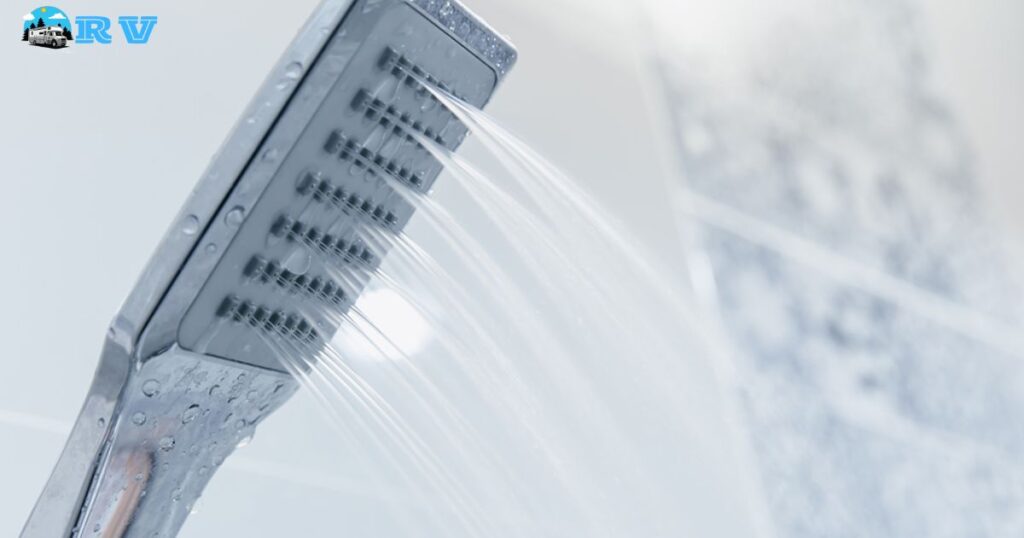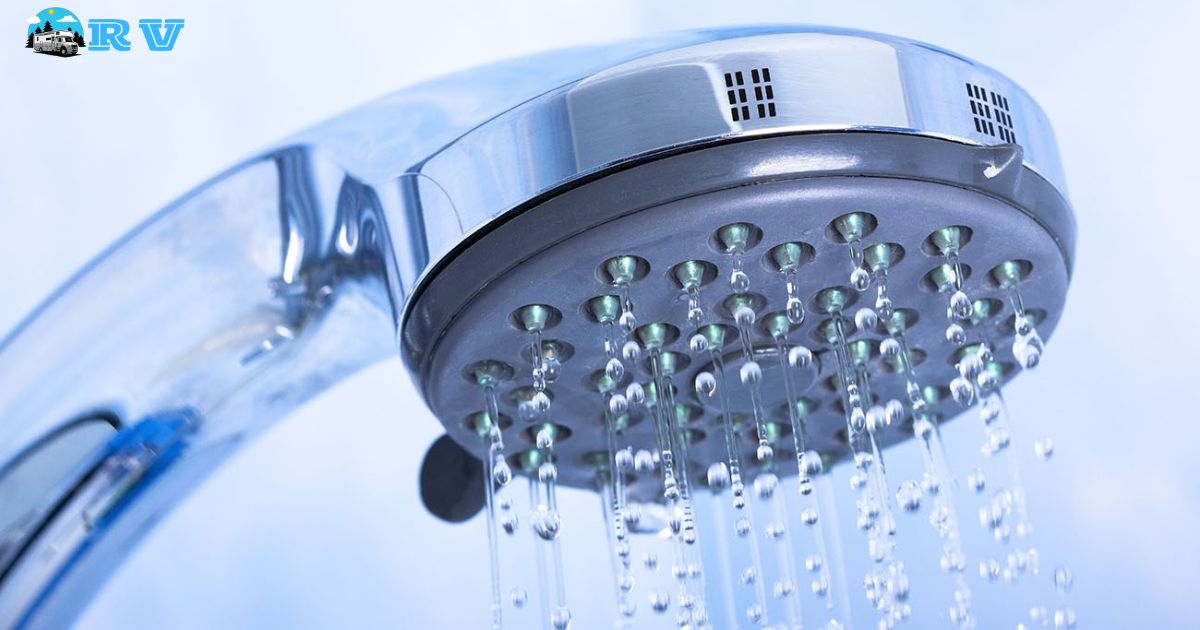Are you wondering how to increase water pressure in your RV shower? Increasing water pressure in an RV shower refers to the process of enhancing the force at which water flows from the showerhead in a recreational vehicle. This can greatly improve your showering experience on the road, making it more enjoyable and efficient.
Have you ever been frustrated with a weak and dribbling stream of water while taking a shower in your RV? If so, you’re not alone. In this guide, we’ll explore various methods and tips on increasing water pressure in an RV shower, ensuring a refreshing and satisfying bathing experience wherever your travels take you.
Improving water pressure in your RV shower can be a game-changer during your camping adventures. Whether you’re dealing with low-pressure campsite water connections or other factors affecting your shower’s performance, understanding increase water pressure in your RV shower can make a world of difference.
The Importance of Addressing Low Water Pressure
Low water pressure in your RV shower isn’t just an inconvenience; it can affect the quality of your RV life in several ways. It can make showering a time-consuming and unsatisfying task, and it may also impact your overall water consumption.
Moreover, it can hamper the performance of appliances that rely on water pressure, such as your sink, toilet, or washing machine. By addressing low water pressure, you can enhance your RV experience and make every shower a more enjoyable part of your travels.
Common Causes of Low Water Pressure in RV Showers

Understanding the common reasons behind low water pressure in your RV shower is the first step in addressing the issue. Several factors can contribute to this problem, and they can be broadly categorised into water source issues, RV plumbing problems, and showerhead-related factors.
Water Source Issues
Inadequate Campground Water Supply
Campground water supplies can vary significantly in terms of pressure. If the source you’re connected to has low water pressure, it will directly affect your RV’s shower performance. Before we explore how to increase water pressure within your RV, you should make sure that the water source itself is not the problem.
Clogged Water Filters
Many RVs are equipped with water filters to ensure the water entering your vehicle is clean and safe. However, these filters can become clogged over time, reducing water flow and pressure. Regularly checking and cleaning or replacing these filters can make a significant difference in your RV’s water pressure.
RV Plumbing Problems
Pipe Blockages or Leaks
Inside your RV’s plumbing system, pipe blockages or leaks can hinder water flow and pressure. If there are obstructions or damage within the pipes, it’s essential to identify and address these issues.
Water Pressure Regulators
Some RVs come equipped with water pressure regulators to protect the internal plumbing from high-pressure water sources. While these regulators are essential for preventing damage, they can sometimes limit water pressure. Adjusting or replacing the regulator can help improve water pressure without compromising your plumbing system’s integrity.
Showerhead-Related Factors
Clogged Shower Head
Over time, mineral deposits and sediment can accumulate in the shower head, reducing the water flow and pressure. Cleaning the shower head regularly can restore it to optimal performance.
Inefficient Shower Head Design
Not all shower heads are created equal, and some are simply more efficient at delivering water pressure than others. Consider upgrading to a high pressure shower head designed specifically for RVs to enhance your shower experience.
To give you a better idea of how these factors relate to each other and their impact on water pressure,take a closer look at a table illustrating the common causes and their respective solutions:
| Common Causes | Impact on Water Pressure | Solutions |
| Inadequate Campground Supply | Low water pressure | Choose campgrounds with better supply |
| Clogged Water Filters | Reduced water flow | Regularly check and clean/replace filters |
| Pipe Blockages or Leaks | Hindered water flow | Identify and address pipe issues |
| Water Pressure Regulators | Limits water pressure | Adjust or replace regulators |
| Clogged Shower Head | Reduced water flow | Clean the shower head regularly |
| Inefficient Shower Head Design | Low-pressure delivery | Upgrade to a high-pressure RV shower head |
Methods to Increase Water Pressure
Now that we’ve identified the common causes of low water pressure in RV showers, let’s delve into the methods and solutions to increase water pressure effectively. These solutions cover everything from improving your water source to optimising your RV’s plumbing system and enhancing the shower head.
Checking and Improving the Water Source
Upgrading Water Hoses
The water hoses connecting your RV to the campground’s water supply play a crucial role in determining water pressure. Investing in high-quality hoses that are the appropriate size for your RV can improve water flow.
Using a Water Pressure Regulator Adjuster
If the campground’s water supply is the issue, you can install a water pressure regulator adjuster. This device allows you to increase the incoming water pressure to a level that’s more suitable for your RV’s needs.
RV Plumbing Maintenance
Inspecting and Cleaning Pipes
Periodic inspections and cleaning of your RV’s pipes can help identify and remove blockages or obstructions. This is particularly important if you notice reduced water pressure in multiple areas of your RV, not just the shower.
Addressing Leaks and Blockages
Leaks and blockages in your RV’s plumbing system can significantly impact water pressure. Addressing these issues can restore proper water flow throughout your vehicle.
Enhancing the Showerhead
Cleaning and Descaling
If your shower head is clogged with mineral deposits and scale, a good cleaning can often do wonders for improving water pressure. Use a descaling solution or vinegar to break down and remove these deposits.
Replacing with a High-Pressure Shower Head
Sometimes, your existing shower head may not be designed to deliver high water pressure. Consider upgrading to a high pressure RV shower head to enjoy a more invigorating shower experience.
Installing a Water Pressure Booster Pump
For RVers who frequently encounter low water pressure situations, installing a water pressure booster pump can be a game-changer. This pump can increase water pressure throughout your RV, making every water-related task more efficient and enjoyable.
Additional Tips for Optimizing Water Pressure
While the methods mentioned above are effective in increasing water pressure, there are additional tips and best practices that can help you optimize water pressure in your RV shower and conserve water while on the road.
Reducing Water Consumption
Being mindful of your water usage habits can significantly impact water pressure. By using water-saving techniques, such as turning off the water while lathering or using a bucket to collect excess water for other uses, you can make the most of your available water supply.
Using Low-Flow Appliances
Consider replacing older appliances in your RV with low-flow or water-efficient models. These appliances are designed to operate with less water while still providing the same level of performance.
Being Mindful of Water Usage Habits
Small changes in your daily water usage habits can go a long way. For example, taking shorter showers and turning off the tap while brushing your teeth can help conserve water and maintain better pressure in your RV shower.
Regular Maintenance and Inspection
Don’t wait until you have a water pressure problem or find your RV fresh water tank overflowing to inspect and maintain your RV’s water systems. Regularly check for leaks, blockages, and wear and tear on hoses, pipes, and connections.
FAQs
How can I tell if the campground’s water supply is causing low pressure in my RV shower?
If you experience consistently low water pressure at various campgrounds, the issue likely lies within your RV, not the water supply.
Is it possible to use a household shower head in my RV for better water pressure?
While you can use a residential shower head, it’s better to opt for an RV-specific one, as they are designed to work efficiently with lower water pressure.
What if I’ve tried all the solutions and still have low water pressure in my RV shower?
If common solutions haven’t worked, it’s wise to have a professional RV technician inspect your plumbing system for hidden issues.
Will water-saving shower heads compromise water pressure in my RV shower?
Water-saving shower heads are designed to maintain good pressure while using less water, making them a suitable choice for RVs.
Why do I experience inconsistent water pressure, fine at some campgrounds but low at others?
Inconsistent water pressure can result from variations in campground water supplies; using a water pressure regulator adjuster can help ensure more consistent flow.
Conclusion
In the world of RV travel, a satisfying shower can make all the difference in your overall experience. Addressing low water pressure in your RV shower is not only possible but also essential for ensuring you can enjoy a refreshing and invigorating shower no matter where your travels take you.
By understanding the common causes of low water pressure and implementing the right solutions, you can enhance your RV experience and make every shower a more enjoyable part of your adventures. So, gear up, hit the open road, and look forward to experiencing the joy of a high-pressure RV shower.
Low water pressure can turn a simple shower into a frustrating experience. But now, armed with the knowledge of common causes and effective solutions, you’re ready to take control of your RV shower’s water pressure. Say goodbye to feeble streams and hello to the invigorating showers you deserve on the road.











